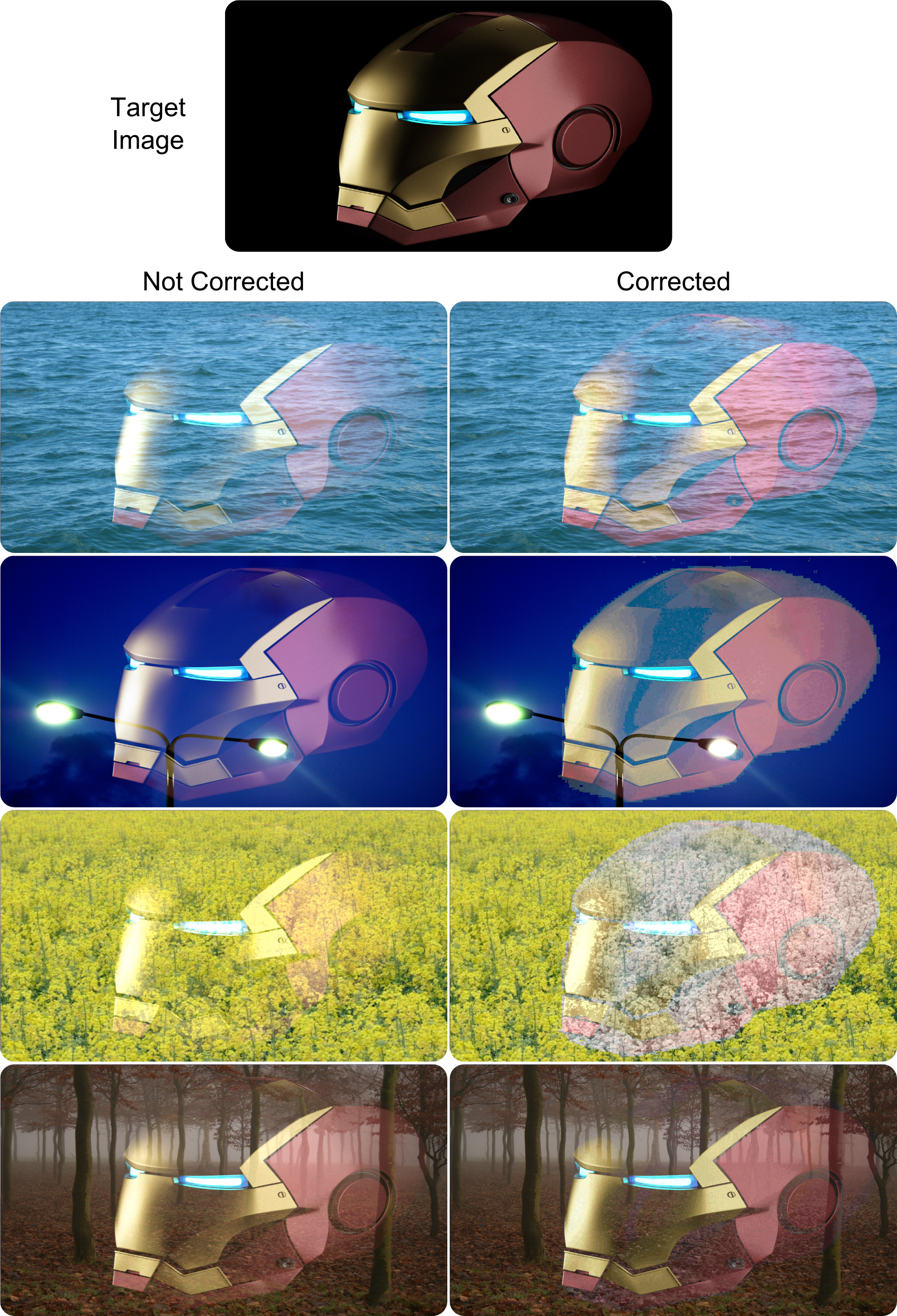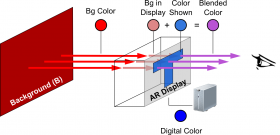« Back to Publications list
Color Correction for Optical See-Through Displays Using Display Color Profiles
Download Publication File
Abstract
In optical see-through displays, light coming from background objects mixes with the light originating from the display, causing what is known as the color blending problem. Color blending negatively affects the usability of such displays as it impacts the legibility and color encodings of digital content. Color correction aims at reducing the impact of color blending by finding an alternative display color which, once mixed with the background, results on the color originally intended.
In this paper we model color blending based on two distortions induced by the optical see-through display. The render distortion explains how the display renders colors. The background distortion explains how background colors are changed by the display material. We show the render distortion has a higher impact on color blending and propose binned-profiles (BP) – descriptors of how a display renders colors – to address it. Results show that color blending predictions using BP have a low error rate – within 9 just noticeable differences (JND) in the worst case. We introduce a color correction algorithm based on predictions using BP and measure its correction capacity. Results show light display colors can be better corrected for all backgrounds. For high intensity backgrounds light colors in the neutral and CyanBlue regions perform better. Finally, we elaborate on the applicability, design and hardware implications of our approach.

More examples: http://blog.jhincapie.com/2014/02/05/color-correction-for-see-through-augmented-reality-head-mounted-displays/
Coverague by Konika Minolta - [PDF download]
Video
Publisher Link
http://dl.acm.org/citation.cfm?id=2503716
Citation
Sridharan, S.K., Hincapié-Ramos, J.D., Flatla, D.R. and Irani, P. 2013. Color correction for optical see-through displays using display color profiles. In Proceedings of the 19th ACM Symposium on Virtual Reality Software and Technology (VRST '13). ACM, New York, NY, USA, 231-240.

Authors

Srikanth Kirs S
Alumni
Pourang Irani
ProfessorCanada Research Chair
at University of British Columbia Okanagan Campus
As well as: David Flatla,University Of Saskatchewan


